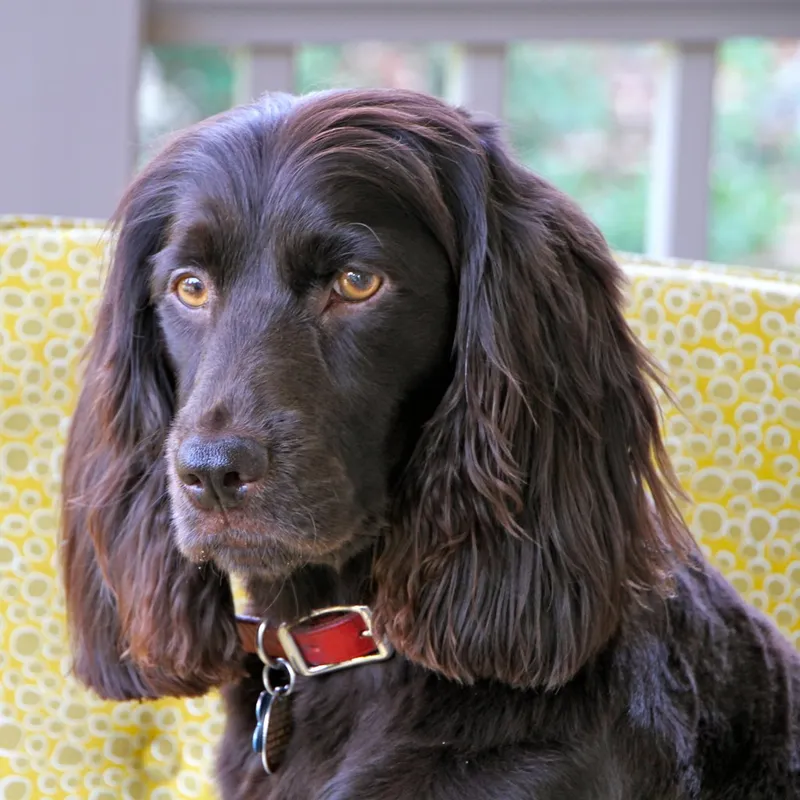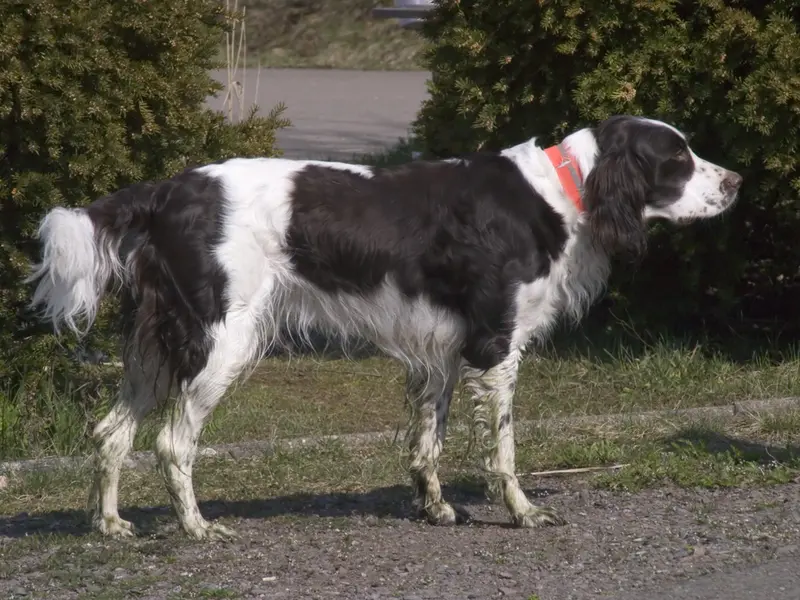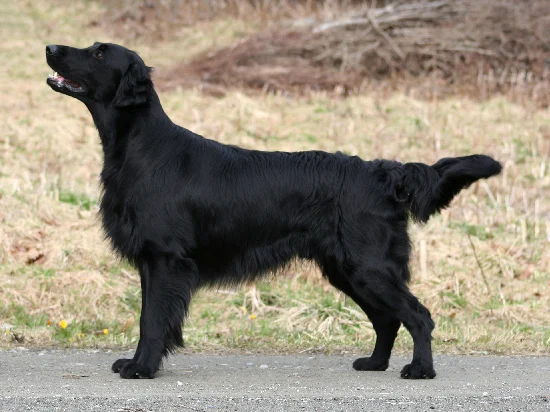Vizsla
The Vizsla is a medium-sized, affectionate sporting dog from Hungary, known for its golden-rust coat and exceptional hunting abilities. They are loyal companions that thrive on exercise and interaction.
Overview
🐕Breed Overview
✨Key Traits
💡What Makes Vizsla Special
Vizslas are characterized by their striking golden-rust coat and lean, muscular build. They are natural hunters with a keen sense of smell and excellent trainability.
Their affectionate nature makes them great family pets, and they are known for forming strong bonds with their owners. Vizslas are also highly energetic, requiring regular exercise to prevent boredom and destructive behaviors.
Their sensitivity means they respond best to gentle training methods, and they thrive in environments where they can be active and engaged with their families. Overall, Vizslas are versatile dogs that excel in various roles, from hunting companions to loving family members.
The Vizsla, a medium-sized sporting dog originating from Hungary, is renowned for its striking golden-rust coat and affectionate nature. With a history dating back to the 10th century, this breed has been a loyal companion and skilled hunting partner for centuries. Vizslas are characterized by their lean, muscular build, excellent trainability, and a natural instinct for pointing and retrieving game.
Their friendly demeanor and high energy levels make them ideal for active families and individuals who enjoy outdoor activities. Known as 'velcro dogs' for their tendency to stay close to their owners, Vizslas thrive on companionship and require ample exercise to prevent boredom and behavioral issues. They are gentle with children and can be protective when necessary, making them excellent family pets.
With proper training and socialization, Vizslas can excel in various canine sports and activities, showcasing their versatility and intelligence. Their minimal grooming needs and low odor make them a practical choice for dog lovers. Overall, the Vizsla is a loving, energetic, and loyal breed that enriches the lives of those who welcome them into their homes.
🎉Fun Facts
They have a unique ability to retrieve both on land and in water, making them versatile hunting companions.
Vizslas are known as 'velcro dogs' due to their strong attachment to their owners.
Vizslas are often described as having little to no dog odor, making them great for sensitive noses.
Breed Characteristics
Family & Friends
Good Behavior
Get Up & Go
Household Harmony
Temperament & Personality
✨Key Traits
🐕Core Temperament
The Vizsla is known for its gentle and affectionate temperament. They are lively and energetic, making them excellent companions for active families.
Their loyalty and protective instincts make them good watchdogs, although they are not aggressive. Vizslas are sensitive dogs that require positive reinforcement during training, as harsh methods can lead to anxiety or stubbornness.
With proper socialization, they can get along well with other pets and children, making them a versatile choice for families.
💫Personality Profile
The Vizsla is a lively and affectionate breed that thrives on human interaction. They are known for their loyalty and often follow their owners around, seeking companionship.
Their playful nature makes them great with children, and they are generally gentle and patient. However, they can become anxious if left alone for long periods, leading to potential behavioral issues.
Vizslas are intelligent and eager to please, making them relatively easy to train, although they require consistent and positive reinforcement methods. Their high energy levels mean they need plenty of exercise and mental stimulation to stay happy and healthy.
🔊Vocal Tendencies
Vizslas are generally moderate barkers. They may bark to alert their owners of strangers or unusual sounds, but they are not known to be excessive barkers.
Their vocalizations can vary based on their mood; they may whine or cry if they feel neglected or anxious. Overall, they communicate effectively with their owners and are responsive to training that encourages appropriate vocal behavior.
Affection & Social Traits
Energy & Activity
Communication Style
Care Requirements
🏃♂️Exercise Requirements
Daily Exercise
Vizslas are high-energy dogs that require a significant amount of exercise to maintain their physical and mental well-being. Ideally, they need at least 1 to 2 hours of vigorous activity each day. This can include long runs, hikes, or play sessions in a secure area where they can run freely.
Activities such as swimming, fetching, and participating in dog sports like agility or obedience training are also excellent for keeping them engaged. Puppies may require shorter bursts of exercise, while senior dogs might benefit from moderate walks and gentle play to accommodate their energy levels and health conditions. Regular exercise is crucial for preventing behavioral issues such as destructiveness or excessive barking, which can arise from boredom or pent-up energy.
Overall, consistent physical activity contributes to a Vizsla's happiness, weight management, and overall health.
Preferred Activities
🏠Living & Adaptability
Space Requirements
Vizslas thrive in environments that provide ample space for exercise. They are not well-suited for apartment living unless the owner is committed to providing extensive outdoor activities.
A home with a large, securely fenced yard is ideal, allowing them to run and play freely. In urban settings, daily trips to parks or open spaces are essential to meet their exercise needs.
Without sufficient space and activity, Vizslas may exhibit destructive behaviors due to frustration or boredom.
Climate Preference
🍲Feeding Guide
Schedule
Food Types
Portion Size
Special Nutritional Needs
Vizslas may have specific dietary needs, particularly regarding protein and fat content to support their active lifestyle. It's essential to choose a high-quality dog food that meets their nutritional requirements. Some Vizslas may be prone to food allergies, so monitoring their diet and consulting with a veterinarian for any necessary adjustments is crucial.
✨Grooming Requirements
Grooming Overview
The Vizsla has a short, smooth coat that requires minimal grooming. Regular brushing once a week is sufficient to remove loose hairs and keep the coat healthy.
They are self-cleaning dogs and do not have a strong dog odor, making them relatively low-maintenance in terms of grooming. Bathing should be done only when necessary, such as after swimming or if they become particularly dirty.
Regular nail trimming and ear cleaning are also important to maintain their overall hygiene.
Care Schedule
Brush weekly; bathe as needed; trim nails every two weeks.
Health Profile
⚕️Health Care
Regular health care is crucial for extending the Vizsla's lifespan. Routine veterinary check-ups, vaccinations, and preventive treatments can help detect and address health issues early.
Owners should also prioritize dental care, as dental disease can lead to more severe health problems. Maintaining a healthy diet, providing regular exercise, and monitoring for any changes in behavior or health are essential practices for promoting the overall well-being of Vizslas throughout their lives.
Health Issues Overview
⏳Average Lifespan
Genetic Factors
Genetics play a significant role in the Vizsla's lifespan, with certain hereditary health issues affecting the breed. Responsible breeding practices that prioritize genetic diversity can help reduce the risk of inherited conditions.
Potential owners should seek reputable breeders who conduct health screenings and provide transparency about the lineage of their dogs. Understanding the genetic background of a Vizsla can help owners make informed decisions and anticipate potential health challenges.
Living Conditions
The Vizsla's lifespan can be influenced by various environmental factors, including housing conditions, exercise routines, and social interactions. Dogs that live in active households with ample outdoor space and regular exercise tend to live longer, healthier lives.
Conversely, those kept in confined spaces with limited activity may experience health issues and a shorter lifespan. Proper nutrition, regular veterinary care, and a stimulating environment are essential for promoting longevity in Vizslas.
🏥Common Health Issues
Hip Dysplasia
Warning Signs
🔬Diagnosis
X-rays and physical examination by a veterinarian.
💊Treatment
Surgical options or medication for pain management.
📝Management Tips
Maintain a healthy weight, provide joint supplements, and avoid excessive exercise during growth stages.
Epilepsy
Warning Signs
🔬Diagnosis
Neurological examination and history of seizures.
💊Treatment
Anticonvulsant medications.
📝Management Tips
Regular veterinary check-ups and medication as prescribed.
Lymphosarcoma
Warning Signs
🔬Diagnosis
Biopsy and imaging studies.
💊Treatment
Chemotherapy or surgery.
📝Management Tips
Regular veterinary check-ups and monitoring for symptoms.
🛡️Preventive Care
🔬Hip Evaluation
Evaluates the hip joints for dysplasia and other abnormalities.
📅 Every 1-2 years, especially for breeding dogs.
🔬Thyroid Function Test
Checks for thyroid function and potential disorders.
📅 Annually, especially in older dogs.
🔬Ophthalmic Examination
Assesses the eyes for hereditary conditions and overall health.
📅 Every 1-2 years, especially for breeding dogs.
Training
🧠Intelligence & Trainability
💪Work Drive
Vizslas have a strong work drive and require mental stimulation to stay happy and healthy. They excel in activities that challenge their natural instincts, such as hunting, agility, and obedience training.
Engaging them in tasks that require problem-solving or physical exertion is essential to prevent boredom and destructive behaviors. Activities like scent work, tracking, and retrieving games can fulfill their need for mental engagement.
Providing a job or task for your Vizsla not only keeps them occupied but also strengthens the bond between dog and owner.
⚠️Training Considerations
Vizslas can exhibit behavioral challenges if not properly trained and socialized. Common issues include separation anxiety, destructiveness, and excessive barking, particularly if they feel neglected or under-stimulated.
Their sensitive nature means they respond poorly to harsh training methods, which can lead to fearfulness or stubbornness. To overcome these challenges, owners should focus on positive reinforcement techniques, providing plenty of mental and physical stimulation.
Consistent training sessions, socialization with other dogs and people, and engaging activities can help mitigate these issues and foster a well-adjusted dog.
📝Training Tips
Training a Vizsla requires patience and consistency. Positive reinforcement methods, such as treats and praise, work best with this breed. Start training early, focusing on basic commands and socialization.
Incorporate fun activities to keep them engaged, as Vizslas thrive on interaction and mental challenges. Avoid harsh corrections, as they can damage the dog's sensitive temperament. Regular training sessions should be balanced with playtime to maintain their interest and enthusiasm.
Consider enrolling in obedience classes or working with a professional trainer to establish a solid foundation.
History & Heritage
📜Origin Story
The Vizsla's origins date back to the 10th century, when the Magyar tribes settled in the Carpathian Basin. These tribes relied on their dogs for hunting, and the Vizsla quickly became a trusted companion in the field. The breed's early history is marked by its close association with Hungarian nobility, who valued the Vizsla for its hunting skills and loyalty.
The first documented mention of the breed appeared in the illustrated Vienna Chronicle of 1357, showcasing its esteemed status. Throughout history, the Vizsla endured various challenges, including the Turkish occupation and the world wars, which threatened its existence. However, dedicated breeders preserved the breed's lineage, ensuring its survival and resurgence in popularity.
Today, the Vizsla is recognized as a versatile hunting dog and a cherished family companion.
⏳Development History
The Vizsla's lineage can be traced back to the Magyar tribes in the 10th century, who utilized these dogs for hunting. Over the centuries, they were selectively bred for their hunting abilities, resulting in a breed that excels in both pointing and retrieving.
The first written reference to the Vizsla dates back to 1357, highlighting their historical significance. Despite facing near extinction in the 19th and 20th centuries due to wars and changing hunting practices, dedicated breeders worked to revive the breed.
The American Kennel Club recognized the Vizsla in 1960, further establishing its presence outside Hungary. Today, the Vizsla is celebrated for its versatility and affectionate nature, making it a beloved companion and hunting dog.
🛡️Purpose & Historical Role
Originally bred as a hunting dog, the Vizsla was designed to excel in both pointing and retrieving game. Its keen sense of smell and agility made it an invaluable asset to hunters, particularly in the pursuit of birds and upland game.
Over time, the Vizsla has evolved into a beloved family pet, known for its affectionate nature and loyalty. While it still retains its hunting instincts, the breed is also recognized for its versatility in various canine sports and activities, including obedience, agility, and therapy work.
🏺Cultural Significance
The Vizsla holds a special place in Hungarian culture, revered as both a hunting companion and a family pet. Historically, they were favored by Hungarian nobility and were often depicted in art and literature.
Their loyalty and affectionate nature have made them a symbol of companionship in Hungarian households. The breed's resilience through historical challenges, including wars and near extinction, has solidified its status as a national treasure in Hungary.
Today, Vizslas are celebrated not only for their hunting prowess but also for their roles as loving family members, making them a popular choice among dog lovers worldwide.
Conservation Status
This breed is well-established with healthy population numbers.









